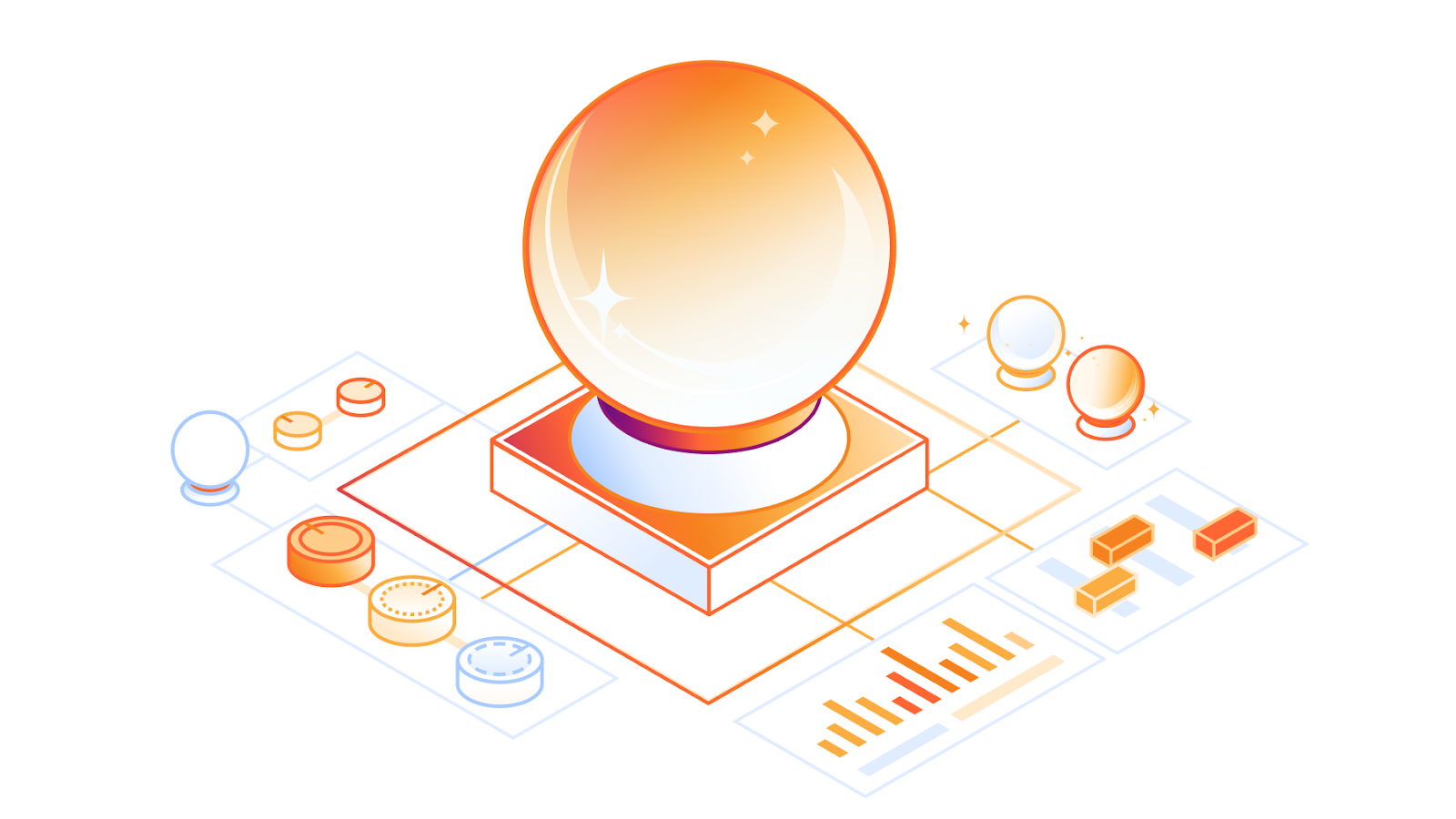R2 adds event notifications, support for migrations from Google Cloud Storage, and an infrequent access storage tier
This post is also available in 简体中文, 繁體中文, 日本語, 한국어,Deutsch, Français and Español.

We’re excited to announce three new features for Cloudflare R2, our zero egress fee object storage platform:
- Event Notifications: Automatically trigger Workers and take action when data in your R2 bucket changes.
- Super Slurper for Google Cloud Storage: Easily migrate data from Google Cloud Storage to Cloudflare R2.
- Infrequent Access Private Beta: Pay less to store data that isn’t frequently accessed. Now in private beta (sign up now).
Event Notifications Open Beta

The lifecycle of data often doesn’t stop immediately after upload to an R2 bucket – event data may need to be transformed and loaded into a data warehouse, media files may need to go through a post-processing step, etc. We’re releasing event notifications for R2 in open beta to enable building applications and workflows driven by your changing data.
Event notifications work by sending messages to your queue each time there is a change to your data. These messages are then received by a consumer Worker where you can then define any subsequent action that needs to be taken.
To get started enabling event Continue reading
Improving Cloudflare Workers and D1 developer experience with Prisma ORM

Working with databases can be difficult. Developers face increasing data complexity and needs beyond simple create, read, update, and delete (CRUD) operations. Unfortunately, these issues also compound on themselves: developers have a harder time iterating in an increasingly complex environment. Cloudflare Workers and D1 help by reducing time spent managing infrastructure and deploying applications, and Prisma provides a great experience for your team to work and interact with data.
Together, Cloudflare and Prisma make it easier than ever to deploy globally available apps with a focus on developer experience. To further that goal, Prisma Object Relational Mapper (ORM) now natively supports Cloudflare Workers and D1 in Preview. With version 5.12.0 of Prisma ORM you can now interact with your data stored in D1 from your Cloudflare Workers with the convenience of the Prisma Client API. Learn more and try it out now.
What is Prisma?
From writing to debugging, SQL queries take a long time and slow developer productivity. Even before writing queries, modeling tables can quickly become unwieldy, and migrating data is a nerve-wracking process. Prisma ORM looks to resolve all of these issues by providing an intuitive data modeling language, an automated migration workflow, and Continue reading
Data Anywhere with Pipelines, Event Notifications, and Workflows

Data is fundamental to any real-world application: the database storing your user data and inventory, the analytics tracking sales events and/or error rates, the object storage with your web assets and/or the Parquet files driving your data science team, and the vector database enabling semantic search or AI-powered recommendations for your users.
When we first announced Workers back in 2017, and then Workers KV, Cloudflare R2, and D1, it was obvious that the next big challenge to solve for developers would be in making it easier to ingest, store, and query the data needed to build scalable, full-stack applications.
To that end, as part of our quest to make building stateful, distributed-by-default applications even easier, we’re launching our new Event Notifications service; a preview of our upcoming streaming ingestion product, Pipelines; and a sneak peek into our take on durable execution, Workflows.
Event-based architectures
When you’re writing data — whether that’s new data, changing existing data, or deleting old data — you often want to trigger other, asynchronous work to run in response. That could be processing user-driven uploads, updating search indexes as the underlying data changes, or removing associated rows in your SQL database when Continue reading
How Picsart leverages Cloudflare’s Developer Platform to build globally performant services

Delivering great user experiences with a global user base can be challenging. While serving requests quickly when you start out in a local market is straightforward, doing so for a global audience is much more difficult. Why? Even under optimal conditions, you cannot be faster than the speed of light, which brings single data center solutions to their performance limits.
In this post, we will cover how Picsart improved the performance of one of its most critical services by moving from a centralized architecture to a globally distributed service built on Cloudflare. Our serverless compute platform, Workers, distributed throughout 310+ cities around the world, and our globally distributed Workers KV storage allowed them to improve their performance significantly and drive real business impact.
Success driven by data-driven insights
Picsart is one of the world’s largest digital creation platforms and a long-standing Cloudflare partner. At its core, an advanced tech stack powers its comprehensive features, including AI-driven photo and video editing tools and community-driven content sharing. With its infrastructure spanning across multiple cloud environments and on-prem deployments, Picsart is engineered to handle billions of daily requests from its huge mobile and web user base and API integrations. For over a Continue reading
EVPN Designs: VXLAN Leaf-and-Spine Fabric
In this series of blog posts, we’ll explore numerous routing protocol designs that can be used to implement EVPN-with-VXLAN L2VPNs in a leaf-and-spine data center fabric. Every design will come with a companion netlab topology you can use to create a lab and explore the behavior of leaf- and spine switches.
Our leaf-and-spine fabric will have four leaves and two spines (but feel free to adjust the lab topology fabric parameters to build larger fabrics). The fabric will provide layer-2 connectivity to orange and blue VLANs. Two hosts will be connected to each VLAN to check end-to-end connectivity.
EVPN Designs: VXLAN Leaf-and-Spine Fabric
In this series of blog posts, we’ll explore numerous routing protocol designs that can be used to implement EVPN-with-VXLAN L2VPNs in a leaf-and-spine data center fabric. Every design will come with a companion netlab topology you can use to create a lab and explore the behavior of leaf- and spine switches.
Our leaf-and-spine fabric will have four leaves and two spines (but feel free to adjust the lab topology fabric parameters to build larger fabrics). The fabric will provide layer-2 connectivity to orange and blue VLANs. Two hosts will be connected to each VLAN to check end-to-end connectivity.
1000BASE-T Part 3 – Autonegotiation
In this post, we’ll take a closer look at auto negotiation. Auto negotiation has the following characteristics:
- It is required to be supported.
- Transmits capabilities for speed/duplex.
- Negotiates Energy Efficient Ethernet (EEE) capabilities.
- Determines the leader/follower relationship on the link.
- Needed for PHY Control, a PMA subfunction.
- Performed when initializing the link.
- Auto-MDIX.
The Auto Negotiation transmitter and receiver is actually a separate system in its own right. In multi-speed PHY devices, auto negotiation is used to select the highest speed that both sides of the link are capable of, before the link is trained. However, it is important to understand that auto negotiation is not optional to be supported, but the standard does not require it to be implemented (thanks to Eric Peterson for clarifying this). A leader and follower must be decided so that clock synchronization can take place. Without auto negotiation, this would have to be manually configured. On some devices it is possible to configure speed on 1000BASE-T interface. However, this does normally not disable auto negotation, but rather limit what capabilities get advertised.
Auto negotiation is performed using Fast Link Pulses (FLP). Historically, 10BASE-T used Link Test Pulse (LTP) to verify the integrity Continue reading
PP008: Dishin’ Up Cloud SLAW (Security Lab A Week)
Learning cloud security can be daunting for experienced network engineers, much less complete newbies. That’s why Rich Mogull started “Cloud Security Lab A Week,” aka Cloud SLAW. Every Thursday, he emails subscribers a new hands-on lab, building a full enterprise deployment week-by-week, step-by-step. Rich explains all the details to JJ and Drew including the cost... Read more »Continuing our work with CISA and the Joint Cyber Defense Collaborative to keep vulnerable communities secure online

Internet security and reliability has become deeply personal. This holds true for many of us, but especially those who work with vulnerable communities, political dissidents, journalists in authoritarian nations, or human rights advocates. The threats they face, both in the physical world and online, are steadily increasing.
At Cloudflare, our mission is to help build a better Internet. With many of our Impact projects, which protect a range of vulnerable voices from civil society, journalists, state and local governments that run elections, political campaigns, political parties, community networks, and more, we’ve learned how to keep these important groups secure online. But, we can’t do it alone. Collaboration and sharing of best practices with multiple stakeholders to get the right tools into the groups that need them is essential in democratizing access to powerful security tools.
Civil society has historically been the voice for sharing information about attacks that target vulnerable communities, both online and offline. In the last few years, we see governments increasingly appreciating how cyberattacks affect vulnerable voices and make an effort to identify the risks to these communities, and the resources available to protect them.
In March 2023, the US government launched the Summit for Democracy Continue reading
Seeing the Unseen: How AI is Transforming SDN Monitoring
Embracing AI will be key to unlocking the full potential of SDN and building the agile, intelligent networks of the future.HW024: Find Your People on the Wi-Fi Pros Slack
Today we talk to Sam Clements, founder of Wi-Fi Pros Slack. This online community has 1,600 members who share information and technical tips, talk shop, and connect with peers. Sam tells us how he developed the community over time, how he structures topics and channels, the ongoing fight against bots and spam, and where it... Read more »Leveling up Workers AI: general availability and more new capabilities
This post is also available in 简体中文, 繁體中文, 日本語, 한국어, Deutsch, Français and Español.

Welcome to Tuesday – our AI day of Developer Week 2024! In this blog post, we’re excited to share an overview of our new AI announcements and vision, including news about Workers AI officially going GA with improved pricing, a GPU hardware momentum update, an expansion of our Hugging Face partnership, Bring Your Own LoRA fine-tuned inference, Python support in Workers, more providers in AI Gateway, and Vectorize metadata filtering.
Workers AI GA
Today, we’re excited to announce that our Workers AI inference platform is now Generally Available. After months of being in open beta, we’ve improved our service with greater reliability and performance, unveiled pricing, and added many more models to our catalog.
Improved performance & reliability
With Workers AI, our goal is to make AI inference as reliable and easy to use as the rest of Cloudflare’s network. Under the hood, we’ve upgraded the load balancing that is built into Workers AI. Requests can now be routed to more GPUs in more cities, and each city is aware of the total available capacity for AI inference. If the request Continue reading
Running fine-tuned models on Workers AI with LoRAs
This post is also available in 简体中文, 繁體中文, 日本語, 한국어, Deutsch, Français and Español.

Inference from fine-tuned LLMs with LoRAs is now in open beta
Today, we’re excited to announce that you can now run fine-tuned inference with LoRAs on Workers AI. This feature is in open beta and available for pre-trained LoRA adapters to be used with Mistral, Gemma, or Llama 2, with some limitations. Take a look at our product announcements blog post to get a high-level overview of our Bring Your Own (BYO) LoRAs feature.
In this post, we’ll do a deep dive into what fine-tuning and LoRAs are, show you how to use it on our Workers AI platform, and then delve into the technical details of how we implemented it on our platform.
What is fine-tuning?
Fine-tuning is a general term for modifying an AI model by continuing to train it with additional data. The goal of fine-tuning is to increase the probability that a generation is similar to your dataset. Training a model from scratch is not practical for many use cases given how expensive and time consuming they can be to train. By fine-tuning an existing pre-trained model, Continue reading
Using wemulate with netlab
An RSS hiccup brought an old blog post from Urs Baumann into my RSS reader. I’m always telling networking engineers that it’s essential to set up realistic WAN environments when testing distributed software, and wemulate (a nice tc front-end) seemed like a perfect match. Even better, it runs in a container – an ideal component for a netlab-generated virtual WAN network.
wemulate acts as a bump in the wire; it uses Linux bridges to connect two container interfaces. We’ll use it to introduce jitter into an IP subnet:
┌──┐ ┌────────┐ ┌──┐
│h1├───┤wemulate├───┤h2│
└──┘ └────────┘ └──┘
◄──────────────────────►
192.168.33.0/24
Using wemulate with netlab
An RSS hiccup brought an old blog post from Urs Baumann into my RSS reader. I’m always telling networking engineers that it’s essential to set up realistic WAN environments when testing distributed software, and wemulate (a nice tc front-end) seemed like a perfect match. Even better, it runs in a container – an ideal component for a netlab-generated virtual WAN network.
wemulate acts as a bump in the wire; it uses Linux bridges to connect two container interfaces. We’ll use it to introduce jitter into an IP subnet:
┌──┐ ┌────────┐ ┌──┐
│h1├───┤wemulate├───┤h2│
└──┘ └────────┘ └──┘
◄──────────────────────►
192.168.33.0/24
1000BASE-T Part 2 – Deepdive
In 1000BASE-T Part 1, we reviewed the layers and what their purpose is. Now we’re going to go much deeper into the layers that relate to the PHY, which is PCS, PMA, and Autonegotiation. First though, let’s review the objectives of 1000BASE-T:
- Support the CSMA/CD MAC.
- Comply with specifications for GMII (Clause 35).
- Support 1000 Mbit/s repeater (Clause 41).
- Provide line transmission support full and half duplex operation.
- Meet or exceed FCC Class A/CISPR or better operation.
- Support operation over 100 meters of copper balanced cabling (defined in 40.7).
- Bit Error Ratio less than or equal to 10^-10.
- Support Auto negotiation (Clause 28).
How does 1000BASE-T achieve a bandwidth of 1000 Mbit/s? As you probably know, the twisted pair cable consists of four pairs, eight wires in total, where transmit and receive are separated to achieve full duplex operation:

The meaning of hybrid in this context is that transmit and receive is performed on the same pair. Every pair is capable of 250 Mbit/s data rate, for a total of 1000 Mbit/s. As PAM-5 encoding is used (more on this later), the baud rate is 125 MHz. This means that the PHY receives 8-bit words to send every Continue reading
Tech Bytes: Simplifying Network Deployment & Operations With Nile (Sponsored)
Today Austin Hawthorne from Nile joins us to dig into the company’s Network as a Service (NaaS) approach and how it differentiates from traditional networking solutions. Nile aims to streamline network deployment and operations by providing a complete network service: It performs the site survey, provides the switches and access points, brings the gear on... Read more »NB472: HPE Adds GenAI to Aruba Central; Intel Eager to Slurp Billions in Subsidies
Take a Network Break! This week we try to peel back the layers on HPE’s announcement about new GenAI capabilties in Aruba Networking Central, parse Broadcom’s touting of its AI credentials, and feel conflicted about Intel sucking up billions in taxpayer dollars. South Korean chipmaker SK Hynix dangles a $4 billion investment promise to the... Read more »Network Service Providers Hit with AI Traffic Surge
The growing use of AI by enterprises and consumers is impacting data center and provider networks. As such, both need to be upgraded to support growing AI traffic.Nornir Network Automation

Nornir is a Python library designed for Network Automation tasks. It enables Network Engineers to use Python to manage and automate their network devices. Unlike tools like Ansible which rely on domain-specific languages, Nornir leverages the full power of Python, giving you more flexibility and control over your automation scripts.
Nornir feels like what you'd get if Ansible and Python had a baby. If you're used to Ansible, you know that you first set up your inventory, write tasks, and execute them on all or selected devices concurrently. Nornir operates similarly, but the big difference is you use Python code instead of any Domain Specific Language.
My Life Without Nornir
Before I discovered Nornir, my approach to Python automation involved manually setting up a list of devices, specifying each one's vendor, and credentials. This setup could be a simple Python list or a dictionary. Then, I'd loop through each device with a for loop, using libraries like Netmiko or Napalm to execute tasks. These tasks ranged from getting data from the devices to sending configurations. Here is a very simple snippet of managing the devices and using them with Netmiko. This method can get complicated very easily once you start Continue reading